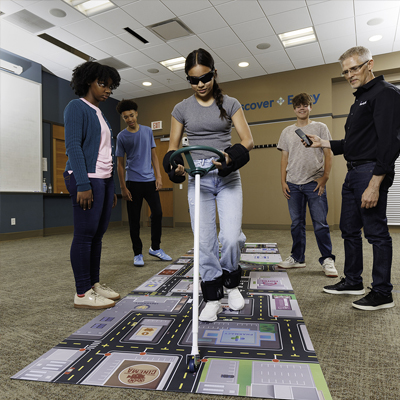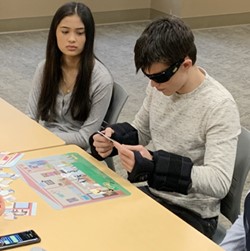
Opioid Education, Awareness, and Prevention
Keep students and young adults safe with awareness, education, and prevention learning opportunities. One of the key ways to help reduce opioid addiction among teens and young adults is awareness
Be First to Know About Fatal Speeding™ — Launching Early 2026! LEARN MORE

The opioid epidemic impacts millions of Americans each year and is the leading cause of injury-related death in the U.S. Despite efforts to combat this crisis, many experts worry the problem is getting worse, not better.
Opioid abuse prevention should be a critical component of your drug abuse education program. Here are four tips for how to structure an impactful opioid abuse prevention program:
Keep reading for more guidance and information on each element of this essential educational programming.
Opioid abuse in the United States became a widespread problem starting in the 1990s when healthcare providers began prescribing prescription opioids to patients at greater rates. Pharmaceutical companies insisted patients would not become dependent; of course, we now know these medications can be highly addictive.
As an increasing number of providers prescribed more opioid medications, more people began to misuse both prescription opioids (such as oxycodone, hydrocodone, and codeine) and non-prescription opioids (such as the illegal drug heroin). Misuse means taking medicine in a way or in a dose different than how it was prescribed, taking someone else’s prescription medicine, or taking medication to get high.
Now that we understand how dangerous and addictive prescription opioids are, healthcare providers, researchers, and government leaders are looking for better pain management strategies and increasing access to treatment and recovery services. However, opioid abuse is still an alarming problem in our country.
According to the U.S. Department of Health and Human Services, in 2018:
In the short term, opioids can relieve pain and make people feel happy and relaxed. However, opioids can also have harmful effects, including:
Opioid misuse can cause hypoxia, which means the brain is not getting enough oxygen. This can lead to permanent brain damage, coma, or death.
Over time, misusing opioids can lead to a substance use disorder, most often in the form of addiction. And once addicted, a user can experience severe withdrawal as soon as a few hours after last taking the drug, leading to muscle and bone pain, sleep problems, diarrhea and vomiting, cold flashes, uncontrollable leg movements, or severe cravings.
One of the best ways to get participants involved and interested in learning about opioid abuse and other drug abuse is to engage them with hands-on learning tools and activities.
Fatal Vision®️ Opioid Goggles replicate the effects of opioid abuse on an individual’s physical, mental, and emotional health and abilities. Using Innocorp’s designated mobile app loaded with specially designed activities, participants can safely experience modeled effects of opioid use, including decreased situational awareness, blacking out, contrast sensitivity impairment, and heaviness or lethargy.
Review our blog post for even more reasons to include hands-on learning in your education program.
In addition to talking openly and honestly about what opioids are, why they are dangerous, and how the opioid epidemic affects millions of Americans, it can be useful to share personal stories from those impacted by opioids during your opioid abuse prevention program.
We offer several educational videos related to drug abuse prevention, designed to reinforce key messages learned in hands-on training, such as:
The Centers for Disease Control and Prevention (CDC) also offers a video library featuring real people sharing stories about their experiences with prescription opioids.
Putting these awareness and engagement tools and resources into action will help save lives. Our specialists are here to answer your questions and help you find the right resources for your opioid abuse prevention program. Contact us online or call 800.272.5023 today.
Tools for Your Opioid & Other Drugs Abuse Prevention Program
Opioid abuse prevention and other drug abuse educational programs can benefit from engaging tools and experiences that get participants involved and interested in learning.
Innocorp is the pioneering developer of Fatal Vision® Goggles and other experiential learning tools designed to educate on the dangers of impairment and promote risk prevention. Innocorp provides impactful, hands-on resources used globally by law enforcement, educators, and safety professionals to demonstrate the consequences of substance use, risky driving, and other dangerous behaviors.
We’d love to online chat! We are available Monday-Friday from 8am-5pm (CST):
Or schedule a time for a consultation:

Keep students and young adults safe with awareness, education, and prevention learning opportunities. One of the key ways to help reduce opioid addiction among teens and young adults is awareness

Set your students up for success by utilizing the full driving safety toolkit available. Driving safety is an important part of any student or young adult education course. Safety

Use laughter with Fatal Vision Goggles as a learning tool to encourage participation and understanding. Incorporating engaging tools like Fatal Vision Impairment Simulation Goggles into educational settings can be a